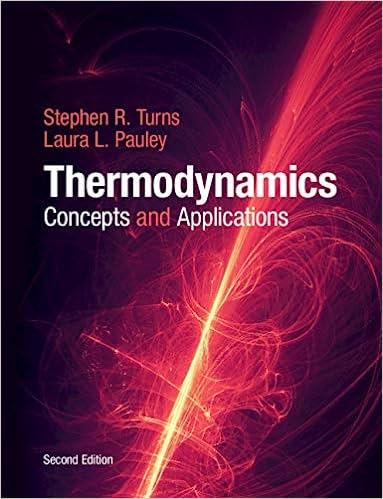Answered step by step
Verified Expert Solution
Question
1 Approved Answer
EXPERIMENT TITLE: Partial Oxidative Roasting of Hematite AIM: To determine the the effect of partial oxidative roasting on percentage composition of haematite ( Fe 2
EXPERIMENT TITLE: Partial Oxidative Roasting of Hematite
AIM: To determine the the effect of partial oxidative roasting on percentage composition of haematite FeO
OBJECTIVES:
To study the decomposition kinetics of hematite FeO during partial roasting through quantification of weight loss at increasing temperatures over time.
Determining the optimal roasting temperature
Investigating the effect of temperature on roasting
Evaluate the efficiency of the roasting process
Analyzing the properties of the roasted sample
THEORY:
Partial oxidative roasting is a metallurgical process that involves heating a sulfide ore in the presence of air at high temperatures. The objective of this process is to convert the sulfide ore into its oxide form, which can then be further processed to extract the desired metal.
During partial oxidative roasting, the sulfide ore undergoes a chemical reaction with oxygen from the air. This reaction results in the conversion of the sulfide minerals into their corresponding oxide minerals. The oxygen from the air combines with the sulfur in the sulfide ore to form sulfur dioxide SO gas, which is released. At the same time, the metal component of the sulfide ore is oxidized to its oxide form.
The specific objectives of partial oxidative roasting can vary depending on the context and the desired outcome of the study. Some common objectives include:
Conversion of sulfide minerals to oxide minerals: The primary objective is to convert the sulfide minerals present in the ore into their corresponding oxide minerals. This conversion is important because oxide minerals are often more amenable to subsequent processing steps for metal extraction.
Enhancement of metal recovery: Partial oxidative roasting can improve the recovery of metals from the ore. By converting the sulfide minerals to oxide form, the subsequent extraction processes can be more efficient and effective in recovering the desired metal.
Reduction of impurities: The roasting process can also help in reducing impurities present in the ore. Some impurities may be volatile and can be removed as gases during the roasting process. This can result in a purer final product.
Optimization of process variables: Another objective of partial oxidative roasting experiments is to investigate the effects of various process variables such as temperature, time, and gas composition on the roasting efficiency and the quality of the final product. By studying the influence of these variables, researchers can optimize the roasting conditions to achieve the desired outcomes.
APPARATUS :
Muffle furnace
Zirconium crucible
Mass balance
Pulverizer
micron sieve
Spatula
Tong
Heat resistant suit
PROCEDURE:
Perform an elemental analysis on your ore sample using XRF machine
Crush and grind your sample to passing microns
Weigh g of ground hematite ore sample into a zirconium crucible.
Place the crucible into a muffle furnace heated to deg C
Periodically open the furnace door to allow air into the furnace to facilitate the oxidation
Use a stopwatch to set a timer for minutes
Remove the crucible after the minutes have lapsed
Allow the crucible to cool
Weigh the sample using a mass balance
Repeat the procedure varying the time from minutes to with a minute increase in time till there is no change in weight of the sample with an increase in temperature
Prepare a sample of the roasted ore for elemental analysis by an XRF machine
SPECIMEN DETAILS BEFORE ROASTING
ID Group
App. QuantExpressOxides
Type Routine measurement
Priority Priority: Normal
Start :: AM
End :: AM
Completed in ::
Material Oxides
Mode Vac
Diameter mm
Method Full AnalysisVacmm
SiO
FeO
AlO
SO
BiO
KO
MnO
NaO
TiO
MgO
POPPM
ZrOPPM
ZnO PPM
SrO PPM
CaO PPM
MoO PPM
CrO PPM
CuO PPM
Fig :sample ore before roasting
Fig :Sample ore after roasting
SPECIMEN DETAILS AFTER ROASTING
ID Group
App. QuantExpressOxides
Type Routine measurement
Priority Priority: Normal
Start :: AM
End :: AM
Completed in ::
Material Oxides
Mode Vac
Diameter mm
Method Full AnalysisVacmm
SiO
FeO
AlO
SO
BiO
KO PPM
CrO PPM
MoO PPM
CaO PPM
CuO PPM
MnO PPM
WHAT ARE REACTIONS THAT OCCUR DURING ROASTING THAT INVOLVE HAEMATITE FROM THE ABOVE EXPERIMENT
Step by Step Solution
There are 3 Steps involved in it
Step: 1

Get Instant Access to Expert-Tailored Solutions
See step-by-step solutions with expert insights and AI powered tools for academic success
Step: 2

Step: 3

Ace Your Homework with AI
Get the answers you need in no time with our AI-driven, step-by-step assistance
Get Started


